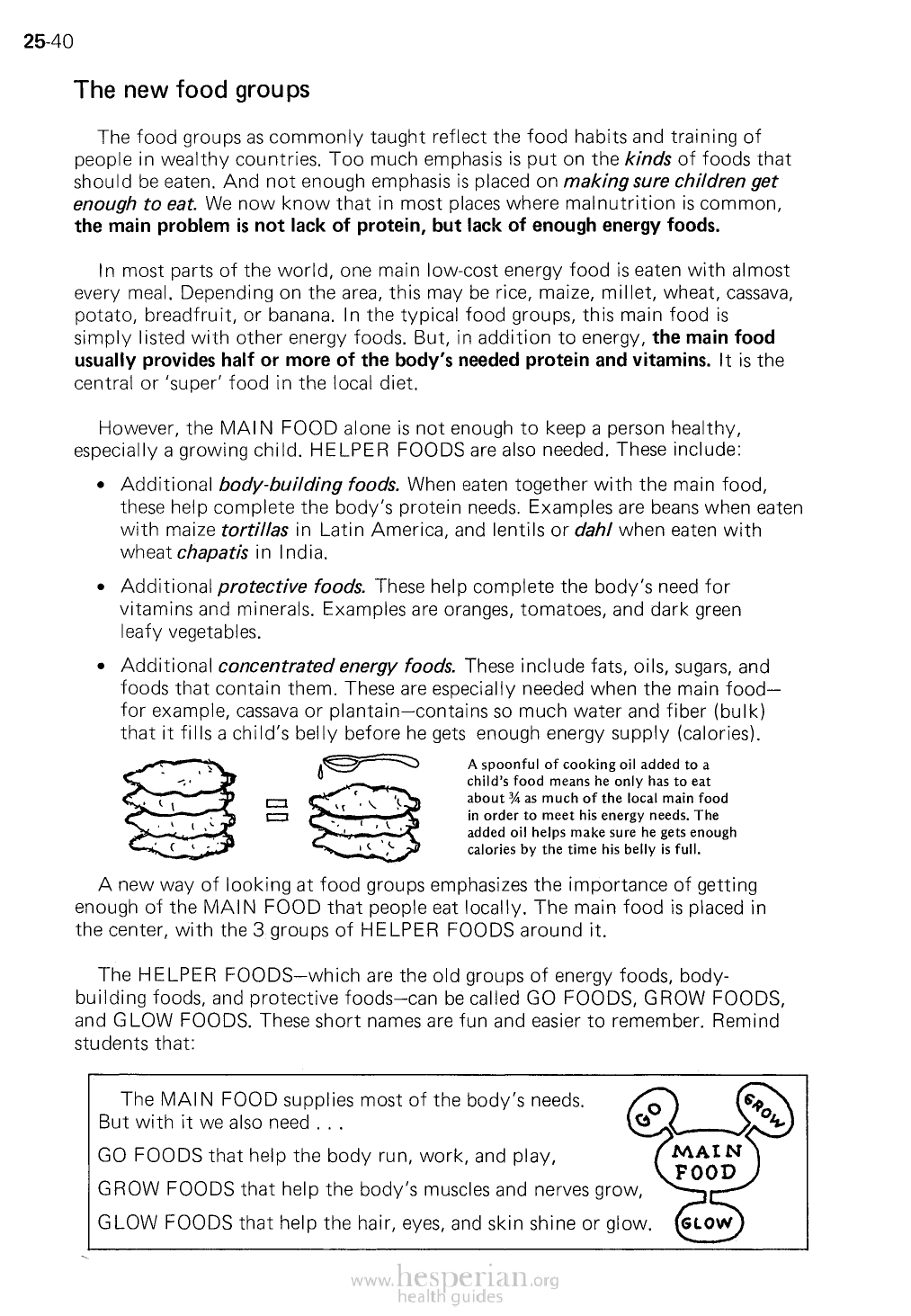
25-40
The new food groups
The food groups as commonly taught reflect the food habits and training of
people in wealthy countries. Too much emphasis is put on the kinds of foods that
should be eaten. And not enough emphasis is placed on making sure children get
enough to eat We now know that in most places where malnutrition is common,
the main problem is not lack of protein, but lack of enough energy foods.
In most parts of the world, one main low-cost energy food is eaten with almost
every meal. Depending on the area, this may be rice, maize, millet, wheat, cassava,
potato, breadfruit, or banana. In the typical food groups, this main food is simply
listed with other energy foods. But, in addition to energy, the main food usually
provides half or more of the body’s needed protein and vitamins. It is the
central or ‘super’ food in the local diet.
However, the MAI N FOOD alone is not enough to keep a person healthy,
especially a growing child. HELPER FOODS are also needed. These include:
• Additional body-building foods. When eaten together with the main food,
these help complete the body’s protein needs. Examples are beans when
eaten with maize tortillas in Latin America, and lentils or dahl when eaten
with wheat chapatis in India.
• Additional protective foods. These help complete the body’s need for
vitamins and minerals. Examples are oranges, tomatoes, and dark green leafy
vegetables.
• Additional concentrated energy foods. These include fats, oils, sugars, and
foods that contain them. These are especially needed when the main food—
for example, cassava or plantain-contains so much water and fiber (bulk) that it
fills a child’s belly before he gets enough energy supply (calories).
A spoonful of cooking oil added to a
child’s food means he only has to eat
about 3A as much of the local main food
in order to meet his energy needs. The
added oil helps make sure he gets enough
calories by the time his belly is full.
A new way of looking at food groups emphasizes the importance of getting
enough of the MAIN FOOD that people eat locally. The main food is placed in the
center, with the 3 groups of HELPER FOODS around it.
The HELPER FOODS—which are the old groups of energy foods, bodybuilding
foods, and protective foods-can be called GO FOODS, GROW FOODS, and
GLOW FOODS. These short names are fun and easier to remember. Remind
students that:
The MAIN FOOD supplies most of the body’s needs.
But with it we also need . . .
GO FOODS that help the body run, work, and play,
GROW FOODS that help the body’s muscles and nerves grow,
GLOW FOODS that help the hair, eyes, and skin shine or glow.